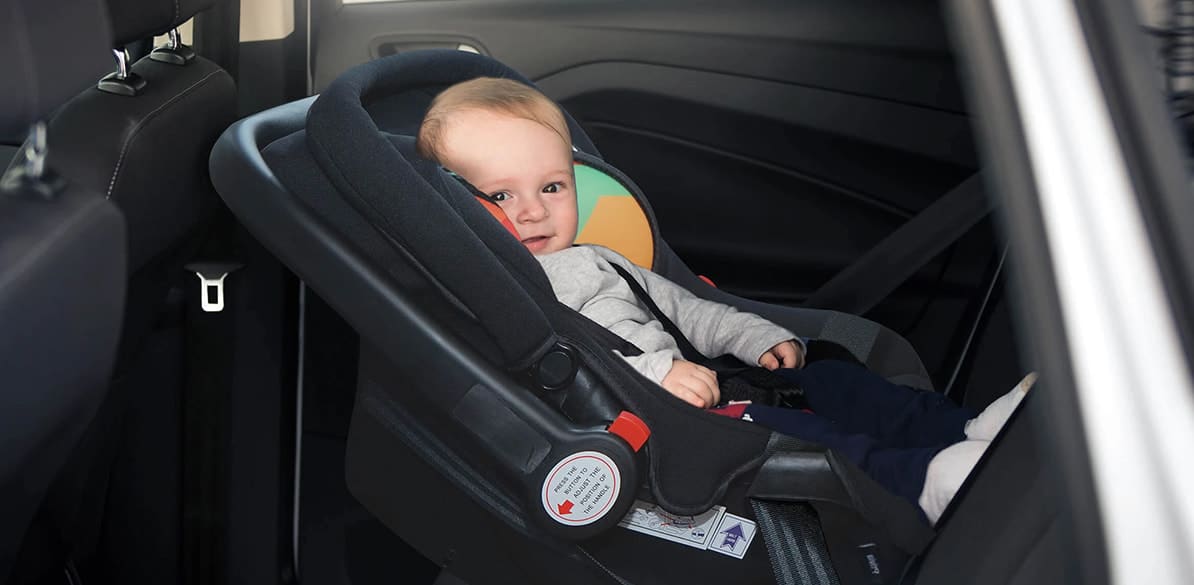Can a child get carsick when facing backwards?

Among the most common justifications for changing the direction of a child restraint system from “rear-facing (390 KB)” to “forward-facing” is the potential for children to get carsick, and their apparent discomfort through having restricted legroom.
Although it is true that the legroom available is very limited, especially as the child grows in height, child restraint systems designed for rear-facing use try to add extra centimetres compared to those that are not specifically designed for this purpose. Nevertheless, the subject of car sickness is unrelated to the design of the CRS, although the direction the child is facing may have an influence.
Young children often get car sickness. The nausea that some people, especially children, experience when travelling by car, train, plane or even on fairground attractions or virtual reality simulators is referred to as kinetosis or motion sickness. The symptoms are very clear: nausea, cold sweats (and obviously a queasy feeling) that may induce vomiting. It is possible to become carsick facing forwards or backwards, but it is true that the chances are greater when facing the rear of the vehicle.
The main cause of motion sickness is very simple: the conflicting movement signals registered by the body. The nervous system “reads” information provided by the different senses about your state of movement. Sight can tell you if you are at rest or in motion; the same goes for your musculoskeletal system and, lastly, your inner ear feeds you information thanks to internal fluid movement: if it moves, you are moving in some way, and if not, you are still.
If you read a book in a moving car, your eyes and musculoskeletal system indicate you are still, but your inner ear is sending movement signals that confuse the brain and produce the symptoms of motion sickness.
Young children, aged 2 to 12 years, are the most prone to car sickness, and one of the reasons for this is the lack of familiarity with the typical movement of a car. Other frequent causes of car sickness are hypoglycemia, fear and stress.
Not all children get carsick. Furthermore, the symptoms may occur in adult life, but there are certain general guidelines to follow in order to minimize, as far as possible, the probability of car sickness:
- It is crucial to try to make the child look straight ahead, towards a distant and, if possible, high point. This is exactly the same whether the child is forward-facing or rear-facing. If he or she is unable to see out of the rear window he or she can look into the distance through a side window.
- Causes or catalysts of motion sickness include: the heat inside the vehicle, poor digestion, lack of air renewal inside the vehicle, strong or unpleasant smells. It is advisable to stop quite often to rest and get some fresh air if a child is prone to car sickness.
- As far as possible, avoid erratic driving with aggressive changes of direction, braking and accelerating. On secondary roads, drive as smoothly as possible, paying attention to any potential symptoms that are obvious from the look on the child’s face.
- Car sickness can be caused by lack of adequate hydration. Small sips of cool water during the journey can help make the child feel better.
- In the same way, rich or large meals that are slow to digest can cause discomfort during the journey.
- Keeping children entertained helps fight motion sickness, or from another perspective, boredom can lead to motion sickness. Even so, reading should be avoided.
Children can become carsick either facing backwards or forward, but when facing backwards there is an added factor of not being able to see forward and have a visual appreciation of the direction the car is heading. This is one of the best ways to avoid car sickness, as the child’s sight will inform him or her of the direction of travel in accordance with what the child’s inner ear registers, thus mitigating the negative effect of the body telling the child that he or she is still.
